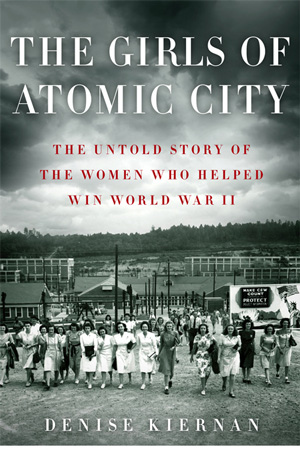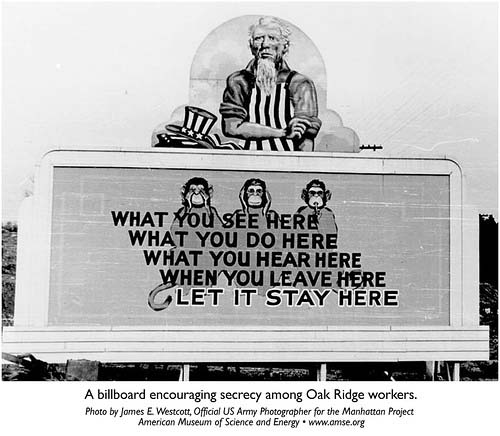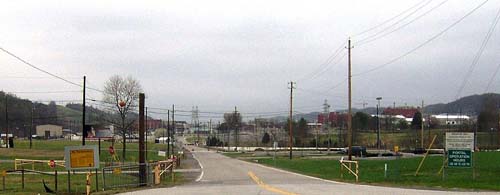Gadgets

When I think about it, I freak a bit. Better not to think. I have gotten pretty good at that over the years, a product of a compartmentalized career dealing with…well, stuff.
Unfortunately, this morning I woke to the clock radio gently playing a Rimsky-Korsakov symphony and got about the business of confronting Monday. I made the coffee and set up camp by the laptop and was most of the way through the first cup of coffee before I noticed that it was 0130, not 0530. It was too late to stop it. I was thinking again. Crap.
The five hour Red Team drill had obviously taken more out of me than I had thought. I tossed the dregs of the Dazbog Russian-roast coffee in the sink which was crowded with clutter to be disposed of, and then I thought about that rather than nuclear weapons, but wound up wide awake back in bed, where I opened the iPad and resumed reading a marvelous new book to see if the details about converting raw Tubealloy ore into highly processed weapons grade uranium to build the first two modern weapons of no-shit mass destruction.

You don’t have to use them, but the cover terms of the Project are useful. “Tubealloy” was the name for the uranium ore that was enriched to bomb grade at Oak Ridge and Hanford. The product of those two pafacilites- later joined by others- were to be integrated into a weapon called “the Gadget.” Sort of cute, from this vantage, but the sprawl of what it took to find, process, integrate and delivery the Gadgets to the Empire of Japan might just be the most expensive thing that any government in the world has done.
If you happen to be awake at some improbable hour, I highly recommend “The Girls of Atomic City” by Denise Kiernan. The subtitle places it in the latest tier of oral history, harvested before all the participants have left us, and while those women who retained their memories of that astonishing time were free to speak. The book is indeed “The Untold Story of the Women Who Helped World War II,” but it is much more than that. It is the sociology of the civilization created by mass warfare on an unimaginable scale, a classic American story, and an eerie Orwellian vision of a democratic society that suspended democracy for “the Duration,” and set security “creeps” against its own workforce to protect a secret that would change the world.
All of it in temporary housing in the mud. Most of it performed by men and women in their twenties- the time when people in those days normally paired up- but against a landscape of barbed wire and guards and a secret that could not be named.
What with the North Koreans and the Iranians and their centrifuges, we have all had to consider the world in new ways- atomic weapons in the hands of people who seem at least a little unhinged, and saber-rattling that is going to go along with those two nations- in addition to established nuclear wild cards in Pakistan and India- is going to make this old former bi-polar world a very interesting place for future generations of policymakers.
When I think about it, I freak a little. Better not to think. Or think about getting out of Washington, anyway.
Some of what is coming could result in military action- self-defense by other, publicly unacknowledged nuclear states that you can probably imagine are the number one prospective target for an Iranian bomb.
It makes you a little sentimental for the despised White Separatist regime in Pretoria, which actually decommissioned its atomic program.
We might be doing the same thing. There was an initiative in the Bush Administration that I brushed up against, a program to update our nuclear arsenal, but it didn’t go anywhere then, and obviously is not going anywhere now.
Ever seen a nuke? The ones I knew were intended for use by aerial delivery by Navy tactical jets. They were guarded by Marines who were really excited about having the use of authorized deadly force to protect them. The proficiency drills for loading them were always conducted with dummies that looked just like the real thing, though of a brilliantly different hue to ensure that no-one made any mistakes.
I saw the Real Deal only once, when a transfer was in progress from one secure place to another- I am still not comfortable talking about what and where- and they were things of ethereal and evil beauty. Slim. Luminous. Elegant. Monstrous. Necessary.
I am not going to get into atomic politics at this point, or why the US Navy had tactical weapons, or how this all played in the Single Integrated Operation Plan (SIOP) run by the Strategic Air Wienies in the old Unified-and-Specified Command system for mass retaliation against the Main Adversary, if required.
I was lucky enough to not get tagged with the intelligence support to the loading drills, though we were all expected to participate in the planning evolutions, and were definitely tagged with the command and control aspect of the nasty things- two man rigid control, the famous “cookies” that in my mind resembled the packaging of a Trojan condom, rather than the authentication system for the End of the World as we knew it.
When I transferred out of the deployed unit, it was frankly a relief. Inspections were hair-raising, and there was no provision for errors or do-overs. Open the wrong “cookie” and the next communication was going to be a world-wide secure blast than announced to every nuclear participant in the U.S. Government was going to know you were an idiot, and not to be trusted with the gadgets or serve much longer on active duty.
Anyway, it was better not to think about it.
All of us have heard about the Manhattan District Engineering Project, or at least it used to be taught in schools. I have no idea what they are teaching now- I know the revisionist version of history deeply angered our pal Mac, and provoked a firestorm when the Smithsonian got political about the display of a completely refurbished Enola Gaye, the B-29 that took the first Gadget to Hiroshima.
“There are too many of us alive,” he declared at Willow one afternoon, not long after America’s Attic had to crawl back from a display that conveyed the topsy-turvey view that the Americans were somehow the aggressors and the Japanese the hapless victims of imperialism. “They tried it too soon. Wait until we are all gone,” and he sipped his virgin Bloody Mary pensively.
Kiernan’s book brings the whole thing past the first rough draft of history- the saga of troubled genius Robert Oppenheimer, obsessive General Leslie Groves, the vast swaths of America’s hills and forests and deserts that were confiscated by FDR’s people and devoted to spawning the Atomic Age.
After thinking about other things- and quite happy to have had the chance- the Manhattan Project intersected my life again, and I was amazed to discover that it was not a historical footnote- it was all still there, but had changed mission sets. Now it was about “remediation” of the toxic nuclear waste created in fifty years of weapons production. The mission, the Department of Energy helpfully pointed out, “was possibly 10,000 years long.”
That is Washington for you, personified. Like the interesting fun fact that copper for magnets was hard to get in a mobilized wartime economy. Lacking that critical element, the Project decided on a substitute: it went to the Department of the Treasury and “borrowed” almost 15,000 tons of silver bullion. Treasury officials blinked. They were accustomed to thinking of silver in terms of ounces, not tons. The promise was that the Mint would be paid back, but you know how these things work.
Anyway, years later, and when I hoped my involvement with the Gadgets was done, I was a useful idiot on the Hill. I had access to Navy assets to support travel by Congressional Members and staff. I had a cross-over customer in Armed Services and Energy who supported the Energy account, and she was tired of the heavy-handed minders the Department always attached to her travels through the astonishing and robust remnants of the Manhattan District Engineering Project. We cooked up a trip that managed- barely- to visit some purely Navy activities to justify the travel, and in the interests of efficiency, we also visited Kirtland AFB in Albuquerque, the Nevada Test Site, and Yucca Mountain and the Hanford Nuclear Reservation, all 586 square miles of it.
It is all still there, at least most of the original parts. It is too dangerous to do anything else with it now. You have to walk up the tunnel cut in hard rock to detonate a nuclear device to really get the creeps. I try not to think about it and mostly succeed. But how it all came to pass is worth a read, and it is about much more than that. On one level, it is about something that is completely inexplicable, which is to say the relations between men and women, and between the races in this country only a little while ago, in Atomic Time.
I may come around to that tomorrow. I vividly recall talking to Mac about how necessary it was to turn the product of the most expensive and secretive project in the history of the world over to a 20-something Air Corps Major named Chuck Sweeny and send him off to incinerate Nagasaki.
I have been there, too, just as Chuck was right after the war. His reaction was interesting, having been the proximate instigator of the horror, and still completely justified in his mind about what he did.
As am I. I think.
As other states are engaged in their own Manhattan Projects, it seems appropriate to think a little about the unthinkable these days, though I will concede that it is much more pleasant not to think of it at all.

(The entrance to the K12 Processing Plant at Oak Ridge, TN. Photo Wikipedia).
Copyright 2013 Vic Socotra
www.vicsocotra.com
